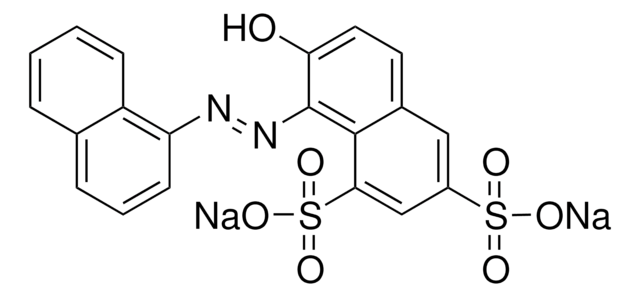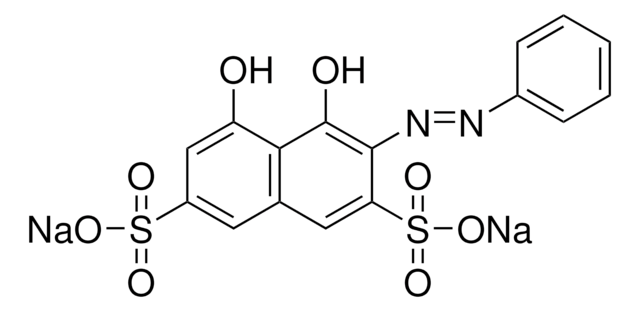79690
Phosphotungstic acid hydrate
for microscopy
Synonym(s):
Tungstophosphoric acid
About This Item
Recommended Products
grade
for microscopy
Quality Level
form
powder or crystals
impurities
≤0.002% total nitrogen (N)
loss
≤15% loss on drying
pH
2 (20 °C)
mp
~95 °C (lit.)
solubility
water: 0.5 g/10 mL, clear, colorless
anion traces
chloride (Cl-): ≤50 mg/kg
sulfate (SO42-): ≤100 mg/kg
cation traces
Ca: ≤20 mg/kg
Cu: ≤5 mg/kg
Fe: ≤20 mg/kg
K: ≤50 mg/kg
Na: ≤50 mg/kg
Pb: ≤20 mg/kg
Zn: ≤5 mg/kg
application(s)
diagnostic assay manufacturing
hematology
histology
storage temp.
room temp
SMILES string
O.O=[W](=O)=O.O=[W](=O)=O.O=[W](=O)=O.O=[W](=O)=O.O=[W](=O)=O.O=[W](=O)=O.O=[W](=O)=O.O=[W](=O)=O.O=[W](=O)=O.O=[W](=O)=O.O=[W](=O)=O.O=[W](=O)=O.OP(O)(O)=O
InChI
1S/H3O4P.H2O.36O.12W/c1-5(2,3)4;;;;;;;;;;;;;;;;;;;;;;;;;;;;;;;;;;;;;;;;;;;;;;;;;/h(H3,1,2,3,4);1H2;;;;;;;;;;;;;;;;;;;;;;;;;;;;;;;;;;;;;;;;;;;;;;;;
InChI key
AVFBYUADVDVJQL-UHFFFAOYSA-N
Looking for similar products? Visit Product Comparison Guide
Related Categories
General description
Application
- Phosphotungstic acid doped ormosil hybrid networks
- Niobia supported phosphotungstic acid (PTA) catalysts
- Titanium dioxide (TiO2) nanoparticles /phosphotungstic acid (HPW) films.
Other Notes
Signal Word
Danger
Hazard Statements
Precautionary Statements
Hazard Classifications
Acute Tox. 4 Oral - Aquatic Chronic 2 - Eye Dam. 1 - Skin Corr. 1C
Storage Class Code
8B - Non-combustible corrosive hazardous materials
WGK
WGK 2
Flash Point(F)
Not applicable
Flash Point(C)
Not applicable
Personal Protective Equipment
Choose from one of the most recent versions:
Already Own This Product?
Find documentation for the products that you have recently purchased in the Document Library.
Customers Also Viewed
Our team of scientists has experience in all areas of research including Life Science, Material Science, Chemical Synthesis, Chromatography, Analytical and many others.
Contact Technical Service










